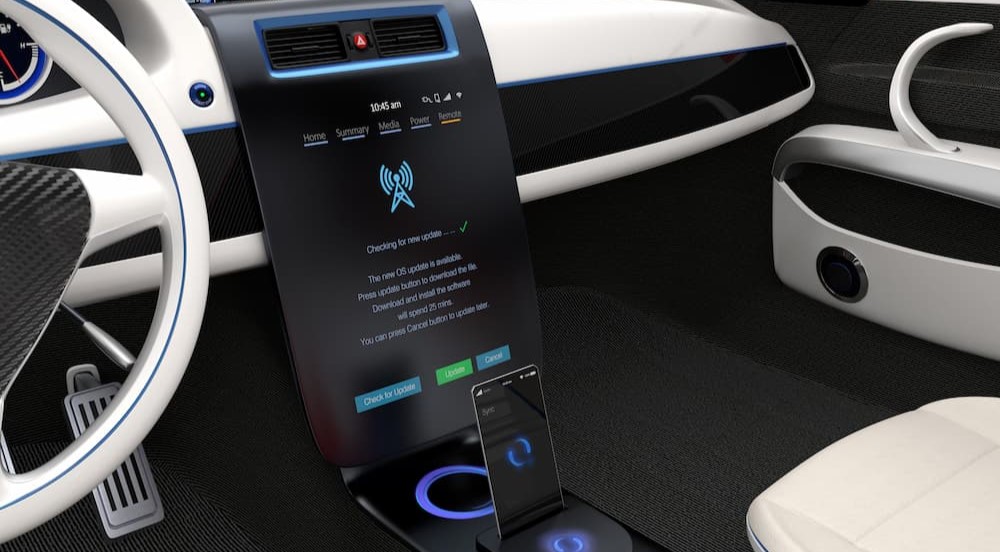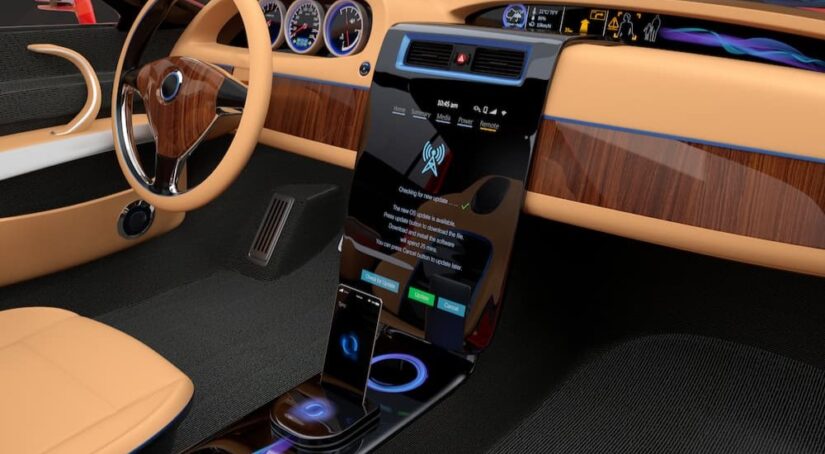As you’re shopping for a vehicle, you have a tremendous number of decisions to make. Among all the different vehicles you can consider, certain features are worth considering as you explore your options and choose the right model. Some things are purely extra niceties that might make your daily drive a bit nicer, but aren’t strictly necessities. For example, built-in navigation is nice, but we all have it on our phones. But some other features can seem like interesting extras at first glance while providing functionality that moves them into the “must-have” realm, whether you realize it or not. Over-the-air (OTA) updates are one of these features. They might seem like an extra goody for those of us who grew up with cassette players in cars, but they can be a transformative essential, especially for electric vehicles (EVs).

What Are OTA Updates and How Do They Work?
OTA updates are, essentially, software updates delivered wirelessly (hence, “over the air” rather than through a physical connection). These kinds of updates have been common in a variety of industries for a long time. Large computer networks can deliver these updates, usually through Wi-Fi, to connected systems or terminals. Windows or Mac updates have been delivered this way for years. The telecommunications industry has long utilized OTA updates to deploy software updates to phones. Anytime you get a new software update to your smartphone through Wi-Fi or your data network, you’re getting an OTA update. This is not new technology, though its applications in the automotive industry are.
The use of OTA updates in the auto industry is quite a bit newer, but it’s still the same concept. Software in cars has been a vital part of the industry for decades, starting with minor things early on but growing with each new model to include much more. Now, software is involved with or handling just about every part of your vehicle, for better or worse. Many people might lament it and yearn for the “good old days” of managing everything in their car in their driveway, but the advances that such software provides have been substantial.
Just like the software on your phone and computer, the software throughout your vehicle can be updated with patches, new versions, and bug fixes. In the past, you would’ve needed to go to your favorite mechanic, who could plug your car into another system to install new software or update something. However, OTA updates allow car companies to deploy updates to your vehicle without you going anywhere or doing anything. This can happen entirely behind the scenes, typically using your vehicle’s mobile data connection, allowing the software in your vehicle to be enhanced or fixed without needing a mechanic.
What Are the Benefits of OTA Updates?
For starters, OTA updates allow car companies to issue bug fixes and updates for software that improve things without you ever realizing it. In a perfect world, software would be perfect and never have problems. But in reality, all software has some bugs and issues, no matter how hard developers try to avoid them. These can be minor or create some serious issues. OTA updates allow the software engineers at car companies to keep refining programs, eliminate bugs and errors, and then send you those fixes without you even realizing it.
Beyond that, OTA updates can also directly improve your vehicle’s performance and overall experience. Just about every part of your vehicle has some kind of software connected to it, and updates can make that software run even better. If you’re interested in an EV, especially an all-electric vehicle, then you should be even more interested in how OTA updates can improve your experience. To be completely fair, some issues can come up with vehicles requiring physical repairs or replacements. The battery fires on Chevy Bolt EV models a few years ago couldn’t be fixed with OTA updates because it was an inherent problem with the old battery system they used before developing the Ultium platform.
Other than those kinds of issues, OTA updates can be used to greatly improve how your vehicle performs. There have already been plenty of cases where companies like Tesla issue updates that directly improve performance, making their vehicles run better or get enhanced range. After all, EVs use software to control power output from the batteries, acceleration from the motors, and much more. By updating that software, a vehicle can become even more efficient or ride smoother without needing any extra work or aftermarket changes. Some upgrades are even available for purchase through the Tesla app, unlocking new features or performance upgrades without a service visit. Furthermore, if an issue is found that causes problems, rather than requiring the kind of recall where you have to take your vehicle to a dealership to be worked on, OTA updates can address recalls and simply require a brief patch and installation to fix the issue.

Are There Drawbacks or Risks to Consider?
Like anything else in this world, OTA updates aren’t a perfect system where everything is sunshine and roses. There will always be issues and problems that can’t be fixed with a software update or bug fix. In those cases, OTA updates aren’t much help. There’s also the potential to have updates take a while to be installed properly, during which time you might not be able to drive your vehicle or use certain features. This is typically relayed to you and requires that you actively accept them so you know what you’re dealing with, but they can still be a hassle. It’s still better than taking your car to the shop, though.
Finally, there are some concerns about safety and security with OTA updates and how they could open your vehicle up to hacking and other issues. That’s a very real worry, but we all have the same worries about our phones, computers, and other devices. The best defense is relying on car companies to develop their software properly and provide data security to keep your system safe. Fortunately, OTA updates can include security fixes that improve things after you roll off the dealership lot. This area is where the benefits outweigh the risks, at least for now.
Know What to Look for in Your Next Vehicle
Choosing a model with OTA updates can make your life a lot easier and provide you with great features today, tomorrow, and for many years to come. You might find new safety systems added to your vehicle after you buy it, improving how well you can control it and stay safe on the road. Similarly, if it’s discovered that there’s an issue with performance or efficiency with your model, then an OTA update can deliver a fix without taking any more time out of your life to address the issue. Best of all, these updates don’t typically require anything from you, so you’re not looking at paying for data or other issues when downloading them. Some new things can be worrisome, but OTA updates offer a number of solutions for problems you don’t even know about right now, and help ensure your vehicle is at its best for many years to come.



